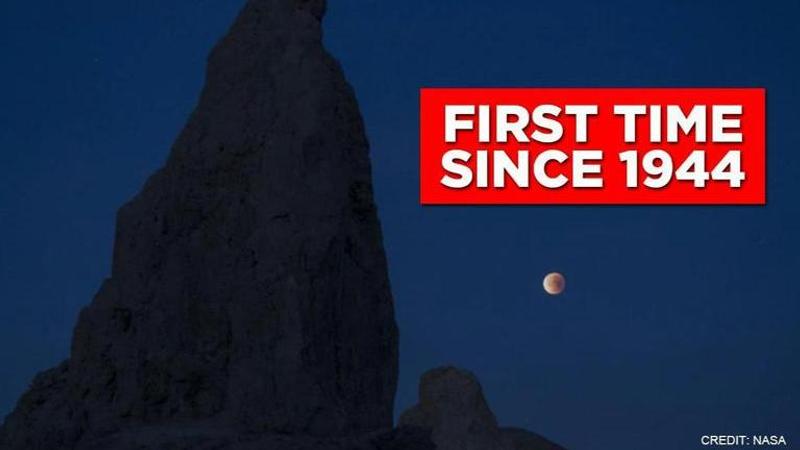Published 15:32 IST, September 24th 2020
Blue Moon to rise on Halloween night for 'all time zones'; all you need to know
Occurring event every 2 and a half years on Halloween, it would be the first since 1944 that a Blue Moon will appear across all time zones at 10:49 EDT.

On September 23, NASA's National Space Science Data Center revealed that a “rare blue moon” will illuminate the skies on the night of Halloween, which will be the second full moon in a month. While this moon is a naturally occurring event every 2 and a half years on Halloween, it would be the first since 1944 that a second full moon, also a Harvest moon, will appear across all time zones at 10:49 EDT, according to Farmer’s Almanac. The full moon will appear to be pearly-gray if not completely blue and will be a rare full Hunter’s Moon.
“Moons are separated by 29 days, while most months are 30 or 31 days long; so it is possible to fit two full moons in a single month. This happens every two and a half years, on average,” NASA said in a release.
This year, because the lunar cycle and the calendar year aren’t accurately synced, the blue moon will be visible to the human naked eye on October 31, 2020, worldwide. Last, the blue moon phenomenon had occurred was in March 2018 in the US. “In 2001, Central and Pacific time zones witnessed the full Moon, but a Halloween full Moon hadn’t appeared for everyone in all time zones since 1944,” the Farmer’s Almanac wrote. Additionally, it said that the full Moon on Halloween occurred rarely once every 19 years—a pattern known as the Metonic Cycle discovered first in 432 BC by the Greek, Meton, of Athens. However, due to variations in the Moon’s orbital period, and the leap days that interfere with the 19-year span, the Blue Moon might occur post a longer period. This cycle worked aptly in the 20th Century, between the years 1925 and 1944 according to Almanac’s report.
Unique second 'corn moon'
Because the moon would be closest to the autumn equinox, the Blue moon will be a giant second corn moon which happens once every three years, thus making the phenomenon an unusual and unique experience for the skywatchers. A corn moon, according to NASA release, is also known at the Fruit Moon and Barley Moon in Europe, the Hungry Ghost Moon in China. Further, it is known by the names such as the Binara Pura Pasalosvaka Poya Day in Sri Lanka and the Honey Full Moon for Buddhists in Bangladesh and Thailand. For Hindus in India, it marks the end of the 10-day celebration of Onam and the start of Pitri Paksha, which honors their ancestors through food offerings.
[ A Harvest Moon rises over Sesimbra Castle south of Lisbon in this impressive series of telephoto exposures. Credit: NASA]
Updated 15:31 IST, September 24th 2020





